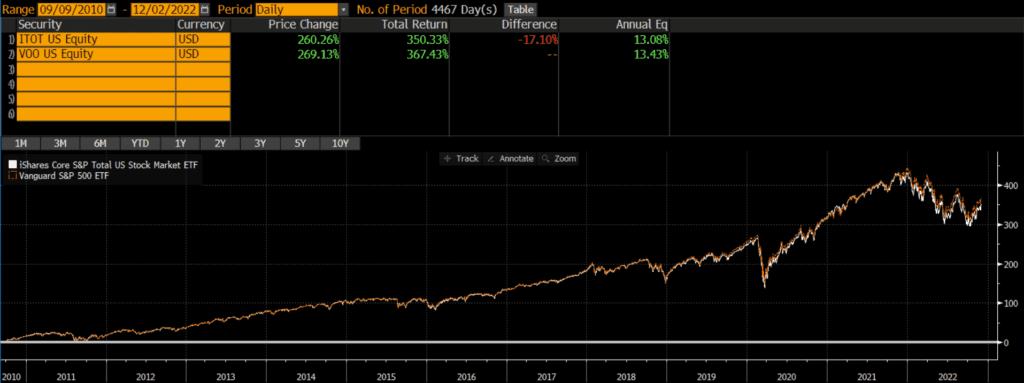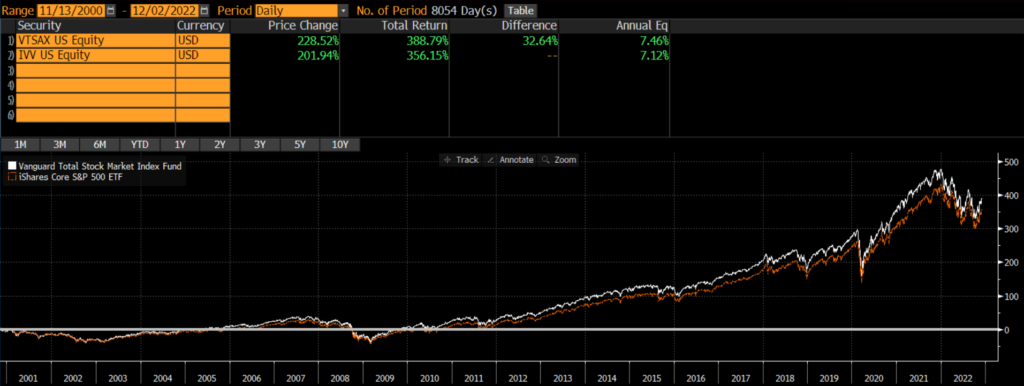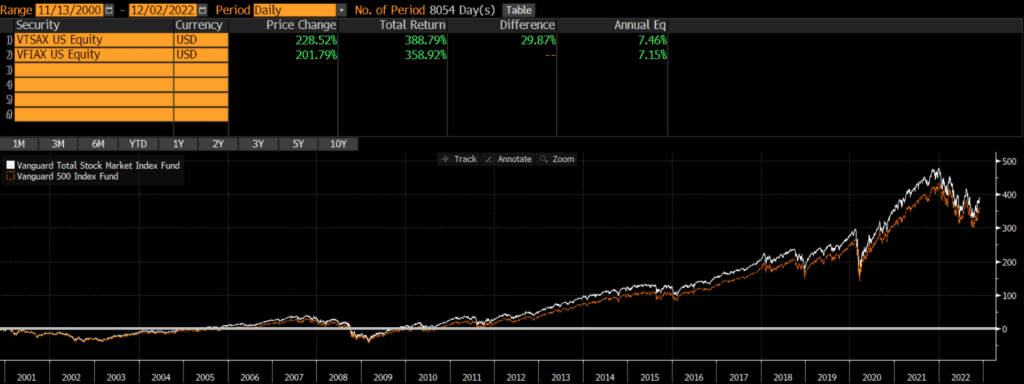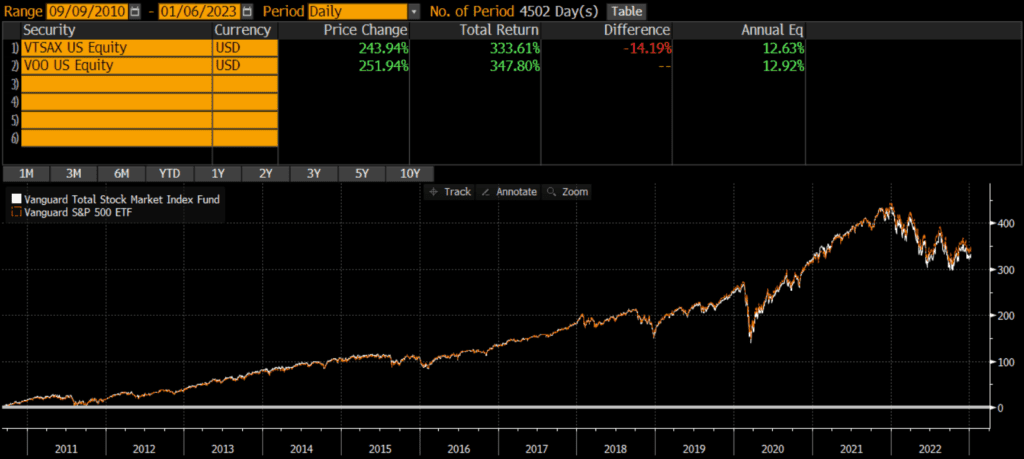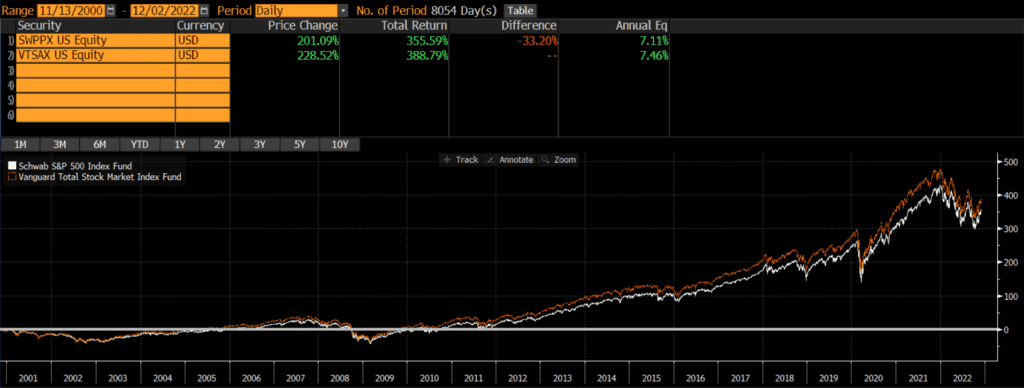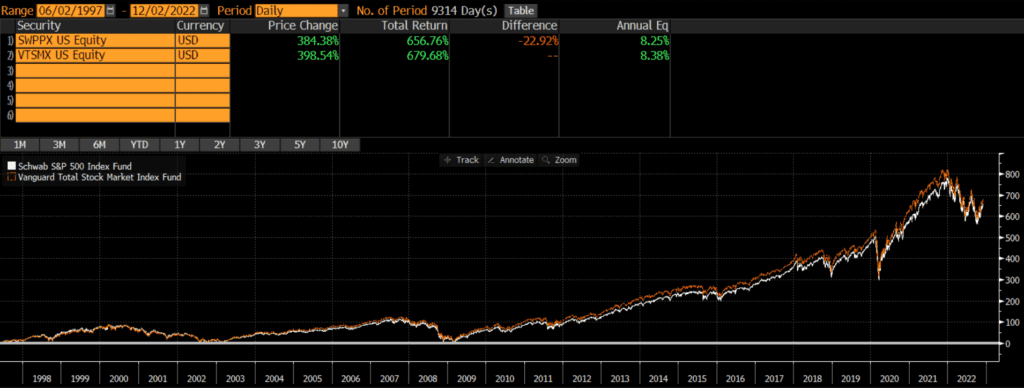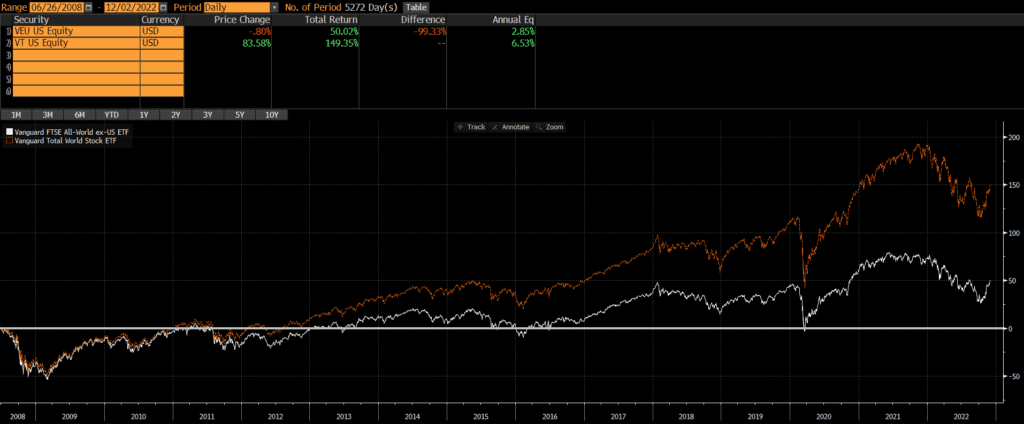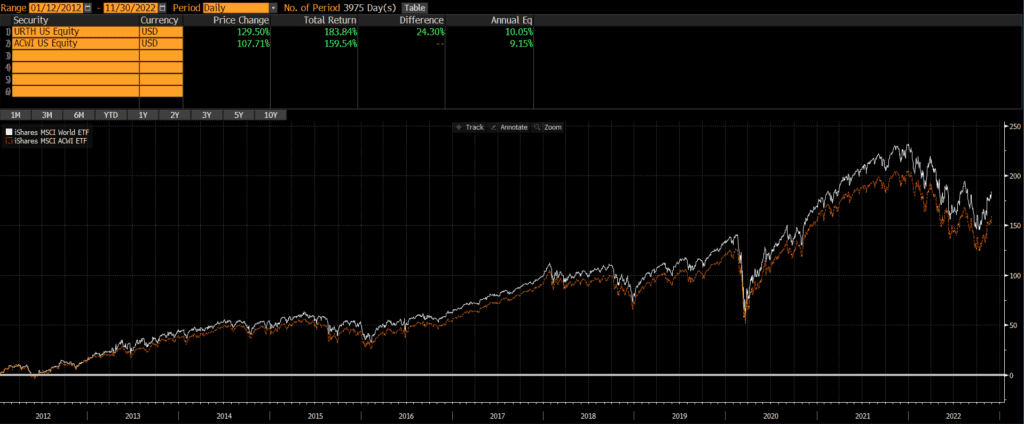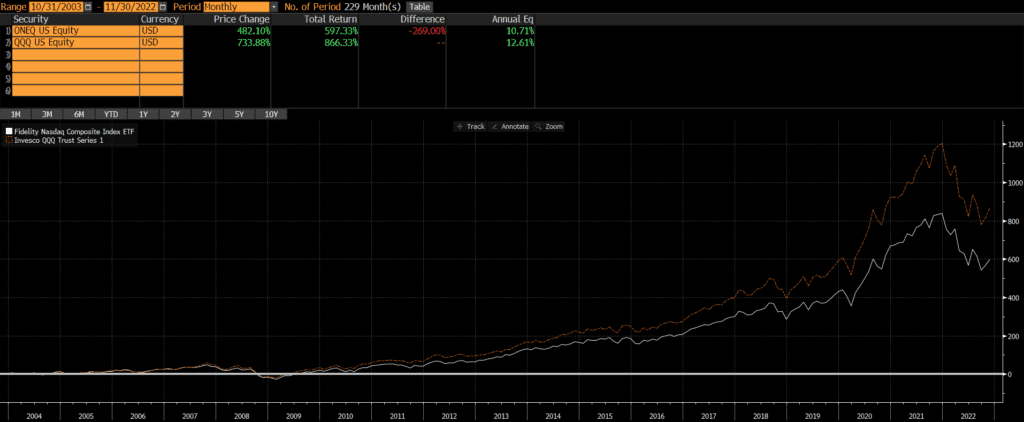ITOT vs IVV
The iShares Core S&P 500 ETF (IVV) and the iShares Core S&P Total U.S. Stock Market ETF (ITOT) are two of the largest funds in existence and both sponsored by Blackrock’s iShares. As their names suggest, IVV and ITOT are a core holding of many portfolios. Many investors compare ITOT vs IVV in order to decide which should be the foundation of their portfolio.
The Short Answer
The main difference between IVV and ITOT is that IVV is a large- and mid-cap ETF, while ITOT is a total market mutual fund. Despite these differences, the long-term total return between these two funds is nearly identical and I consider them interchangeable.
A quick reminder that this site does NOT provide investment recommendations.
The Long Answer
Historical Performance: ITOT vs IVV
IVV was launched on May 15, 2000, and ITOT was launched a few years later on January 20, 2004. Since then, IVV has outperformed by just .09% annually! This is a miniscule difference that could be overshadowed by investor trading costs like trading costs or bid-ask spreads. That being said, the performance between these two funds is basically identical, even considering the market cap differences between the two.
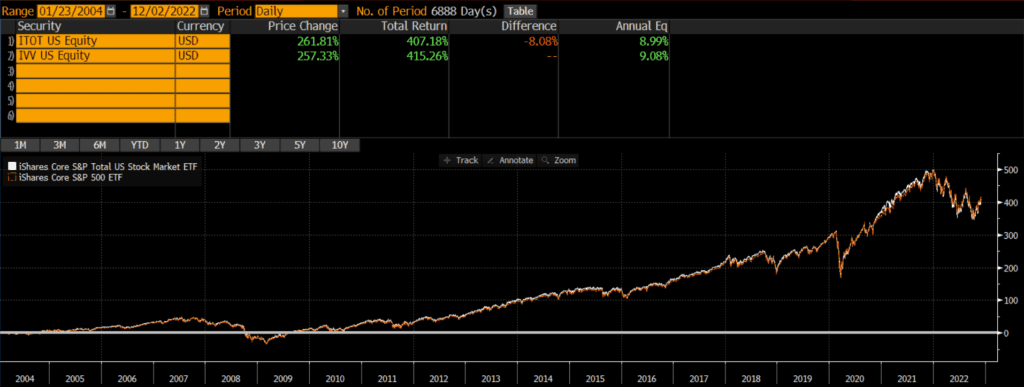
Differences between ITOT vs IVV
The biggest difference between IVV and ITOT is the market cap exposure of the funds. IVV tracks the S&P 500 index which includes mostly large-caps and some mid-caps, while ITOT covers much more of the market by including more mid-caps and small-caps.
Geographic Exposure
Both IVV and ITOT hold essentially 100% stocks, so I will not dig into country exposures or market classification here. For all intents and purposes, the two funds have identical exposures.
Market Cap Exposure
IVV focuses on the S&P 500 index and so it mostly holds large-caps with a bit of mid-cap exposure. ITOT tracks the broader S&P Total Market Index and so it owns many more mid-caps and small-caps, as of 11/30/2022. In other words, IVV is a large-cap vehicle, while ITOT is a total market vehicle. That being said, due to market cap weighting, both funds are overwhelmingly influenced by the large-cap holdings.
| IVV | ITOT | |
| Large-Cap | 83% | 73% |
| Mid-Cap | 16% | 19% |
| Small-Cap | 0% | 9% |
Sector Weights
The sector weights between IVV and ITOT are nearly identical, as of 11/30/2022. The weights are within 1% for every single sector.
| IVV | ITOT | |
| Basic Materials | 2.40% | 2.66% |
| Consumer Cyclical | 10.17% | 10.45% |
| Financial Services | 13.74% | 13.96% |
| Real Estate | 2.77% | 3.45% |
| Communication Services | 7.49% | 6.94% |
| Energy | 5.11% | 5.10% |
| Industrials | 8.87% | 9.59% |
| Technology | 23.74% | 23.24% |
| Consumer Defensive | 7.36% | 6.73% |
| Healthcare | 15.36% | 15.01% |
| Utilities | 2.99% | 2.86% |
Final Thoughts: ITOT vs IVV
Both IVV and ITOT are large, core funds sponsored and managed by one of the largest asset managers in the world. Although IVV is more of a large-cap ETF and ITOT is a total market ETF, performance has been nearly identical. I view these two funds as essentially interchangeable and would not spend too much energy splitting hairs to decide which one is “better.”
